Tutorial - Getting a nice bokeh.

The term "bokeh" or "soft focus" is used to describe the desired blurring of the background of a photograph. The point of blurring the background is, of course, to highlight the subject, which remains very sharp. This technique is often used for close-up portraits (showing only the face).
Although we think this is the easy way out, in this tutorial we're going to show you how to achieve beautiful bokeh.

Un exemple de photo avec bokeh (arrière-plan flou)
How to increase background blur ?
Choose a large aperture.
The greater the aperture of the diaphragm, the shallower the depth of field (i.e. the sharper the area)..

Wide-open diaphragm
Approximately F/4
Low depth of field

Moderately open diaphragm
Approximately F/8

Closed diaphragm
F/8 or more
High depth of field (less of blur)
Getting closer to the subject.
The idea is above all to increase the ratio between the background-to-camera distance(A)
and the subject-to-camera distance (B).
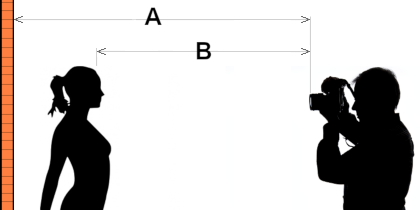
Distances
A and B are not very different: background blur will be minimal.
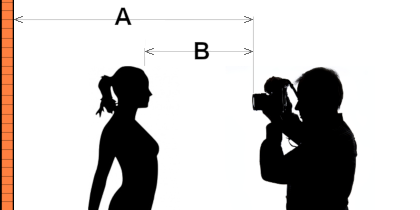
Distances
A and B are very different, making it easier to obtain a blurred background.
Moving the subject away from the background.
Here too, the idea is to increase the ratio between the background-to-camera distance and the subject-to-camera distance.
Using a long focal length.
For a portrait, don't hesitate to choose a focal length between 70mm and 100mm.
The importance of the diaphragm for "pretty" bokeh.
The blurs are more or less aesthetic. What makes the difference is essentially the quality of the lens, and more specifically its diaphragm. Remember that the diaphragm is an accessory made up of blades which, by changing position, reduce or enlarge the aperture.
The number of blades has a huge influence on the quality of the blur: the higher the number of blades, the closer the aperture will be to the perfect circle, and the softer the bokeh will be.
The shape of the aperture (pentagonal, hexagonal...) is reflected in the bokeh patterns and angular shapes are not very aesthetic.

Diaphragm with 5 blades
The shape of the opening is clearly angular.

Diaphragm with 8 blades
The opening is more circular, but the corners are still visible.
The shape of the slats is also important.
Builders round off the shape of the blades so that, even with few lamellae, the opening is roughly ci
The importance of sensor size.
Sensor size also has an effect, not necessarily on bokeh itself, but on its progressiveness.
A small sensor (ASA) will go from sharp to blurred abruptly, reducing the depth of the photo to two planes: the subject plane and the background. Conversely, a larger sensor will better render the different planes of the image, blurring them more and more the further away they are.
Bokeh criticisms.
As we've said, bokeh blurs the background, making the subject stand out, but the systematic use of this technique has a number of drawbacks:
- Lenses don't perform at their best at wide apertures, particularly in terms of sharpness.
- The disappearance of the scenery in a mush of pixels implies the loss of context. We no longer know where the photo was taken. We've also lost all those details that might have "nourished" the subject.
- The photo is on 2 planes: the subject and the background. There is no depth in the image. This fault is particularly noticeable with a ASA sensor.
- Finally, and perhaps most annoyingly, obtaining bokeh implies certain constraints, as we mentioned above (wide aperture, subject-to-background distance and subject-to-photograph distance). As a result, all photos of this kind look alike, especially when it comes to framing. Mastering bokeh also means locking yourself into a very standard image style, without much creativity.
Thinking beyond bokeh.
But how do you detach the subject from the background if the background is as clear-cut as the subject? In fact, there are a multitude of solutions.
Play on the contrast between cool and warm colors.
The first way to ensure that the subject stands out clearly is to use complementary colors, or at least opposition between warm and cool colors.

The background is predominantly purple (a cool color), while the model's dress is red (a warm color).
Photo by Bettina Rheims.
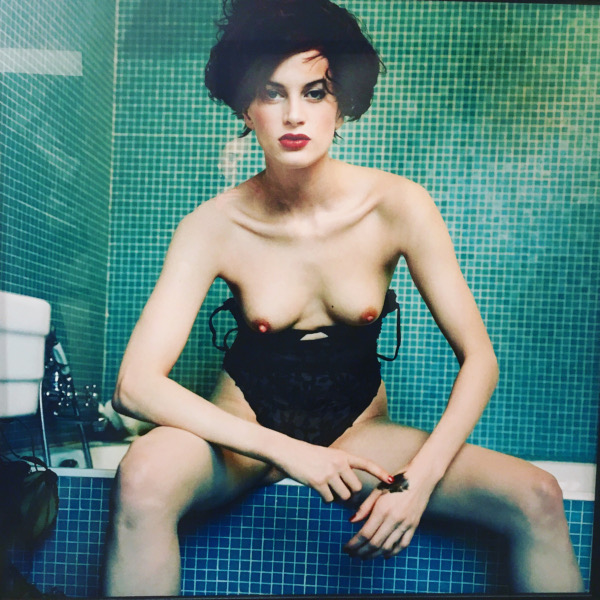
In this photo, the cold blue-green background contrasts with the warm skin of the subject.
Photo by Bettina Rheims.
Opposing light and shadow.
Classically, a dark background will highlight the subject if it's brighter. But the opposite also works: a bright background and a dark subject, resulting in a very graphic, shadowy subject that emphasizes the silhouette.
Working on photo composition.
Scenery, or more generally anything that isn't the subject, can direct the reader's eye to the subject. Lines are particularly effective for this, provided you position the subject at the point where the lines converge.
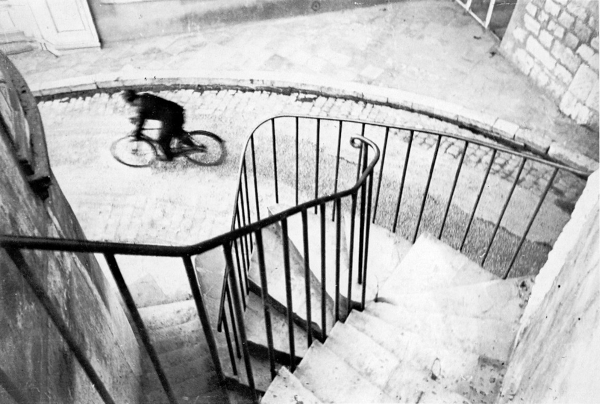
The lines formed by the railings and staircase guide the reader's eye to the cyclist.
Photo by Cartier-Bresson.
We hope we've made you understand that bokeh is a simple technique for making the subject in a photo stand out, but, as we've just seen, there are many other ways of achieving this result.

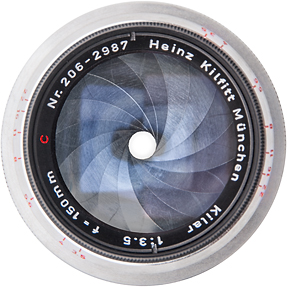

If you liked this page, share it on your favorite network :